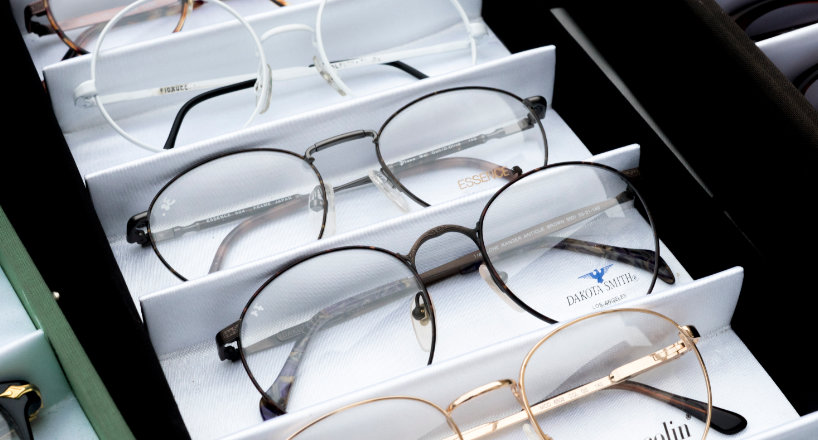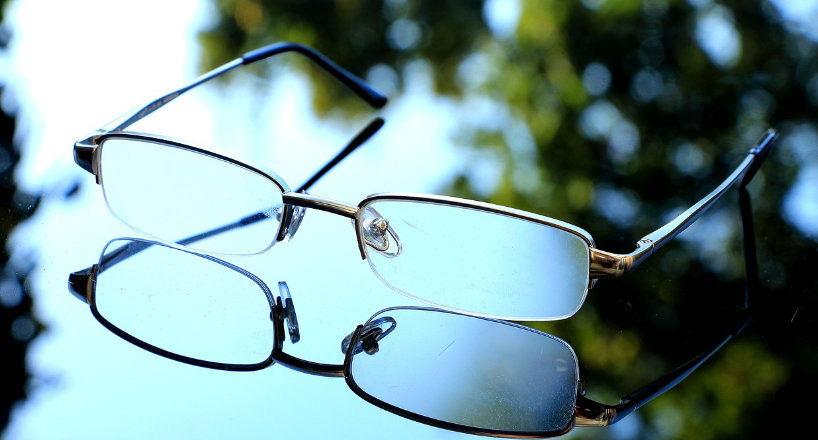There are several lens options for eyeglasses, including:
- Single vision lenses: These lenses have one prescription throughout the lens, used for distance or reading vision.
- Progressive lenses: These lenses have multiple prescriptions in one lens, allowing for a gradual transition between distance, intermediate, and reading vision.
- Bifocals: These lenses have two prescriptions in one lens, with a visible line separating the distance and reading prescriptions.
- Trifocals: These lenses have three prescriptions in one lens, with visible lines separating the distance, intermediate, and reading prescriptions.
- Photochromic lenses: These lenses change from clear to dark in response to sunlight.
- Polarized lenses: These lenses reduce glare and improve visibility in bright light conditions.
- High-index lenses: These lenses are thinner and lighter than standard lenses and are suitable for people with stronger prescriptions.
- Polycarbonate lenses: These lenses are more impact-resistant than standard plastic lenses and are suitable for children and people with active lifestyles.
- Anti-reflective coatings: These coatings reduce glare and improve the appearance of the lenses.
- Scratch-resistant coatings: These coatings help to protect the lenses from scratches.
- UV protection coatings: These coatings protect the eyes from harmful UV rays.
Lens Coatings
Here are a variety of coverings that you can use for your lenses to keep optimum vision and convenience and safeguard your lenses and your eyes.
Anti-reflective/Anti-glare Coatings
Anti-reflective (AR) also called anti-glare coverings helps in reducing the reflections and glare on your lenses, improving your vision and comfort in high-glare environments, and the look of your glasses as well (you can see your eyes plainly without a reflection on the front of the lens).

Reflections from the sun, television and computer screens and brilliant lights (especially when driving at night) can trigger eye strain, headaches and difficulty seeing. AR finishings and lenses can lower this result, improving your vision quality and convenience in these circumstances.
Scratch Resistant Coatings
Scratches not just affect the smooth appearance of the surface area of your glasses but they can interrupt your vision. A scratch-resistant finish adds an additional layer of protection on the surface of the lens to substantially reduce scratching. This finishing is especially excellent for kids who may tend to be a little rougher with their eyewear.
Ultraviolet Coatings
Ultraviolet (UV) finishings safeguard your eyes from hazardous UV rays from the sun. This coating can turn standard lenses into UV-blocking lenses that can obstruct 100% of the UV light from entering your eyes. UV is linked to the development of a number of eye diseases such as cataracts, macular degeneration, and retinal damage.

Anti-fog Coatings
Especially if you reside in a cold climate, you may have experienced strolling indoors from the cold and having your glasses lenses fog up completely. This can take a few minutes to fix and can be harmful if you are driving or need to see plainly. Anti-fog coverings will remove this effect, producing a smooth transition from cold to hot environments.
Lens Options
You might wish to choose an updated lens to enhance the appearance, strength or performance of your glasses.
High Index Lenses
High-index lenses have a higher refractive index which means they show more light than basic prescription lenses. What this implies for you, the customer is that they can be made thinner and lighter than standard lenses. High-index lenses are especially popular with those that need a high prescription as they have the ability to avoid thick lenses, including convenience and a smoother appearance, but a higher price tag.

Trivex or Polycarbonate Lenses
Trivex or polycarbonate lenses are impact-resistant lenses– a fantastic choice for sports and security eyeglasses as well as basic sunglasses and glasses for active types or kids. These lenses also provide full UV defense and are lightweight for ideal comfort.
Polychromatic Lenses
Polychromatic lenses are made with special innovation that turns them into sunglasses when exposed to sunshine. The lenses darken instantly when you go outdoors and return to regular when you go back indoors. Polychromatic lenses can be available in a number of tint colors and are fantastic when you need prescription sunglasses but do not want to carry around or pay for another pair.
Aspheric Lenses
Aspheric lenses utilize sophisticated technology to produce a slimmer, flatter, and lighter lens than standard prescription lenses. While aspheric lenses can enhance the look of any prescription lens, they are especially helpful for those who are farsighted since those lenses tend to bulge out in the middle.
So the next time you remain in the market for brand-new glasses, speak with your eye doctor or optician about the very best lens options for your eyes, your vision, and your lifestyle.